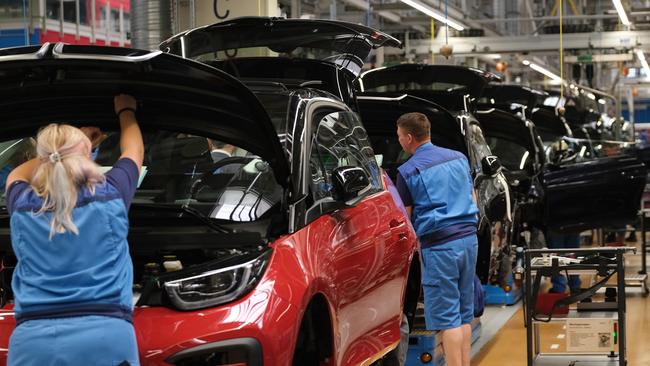BHP revs its outlook for adoption of electric vehicles
BHP has revved its electric car numbers, noting they could make up three quarters of cars by 2050.

BHP has raised its forecast for the adoption of electric vehicles worldwide.
In a blog post, BHP market analysis and economics vice president Huw McKay said the company expects the proportion of electric cars on roads globally to be at least 7 per cent by 2035, up from 5 per cent previously. The proportion of electric cars on the road by 2050 was expected to be more than 27 per cent, up on an earlier forecast of 21 per cent.
At the higher end of its forecast range, the penetration rate could climb to 36 per cent by 2035 and as much as 75 per cent in 2050.
“The first 100 million electric vehicles on the road are expected to reduce global oil demand by 1.3 million barrels per day … while the mid-case electric vehicle fleet will consume around 5 per cent of the world’s electricity at mid-century,” Dr McKay said.
He said that average battery costs had remained on a trajectory of annual percentage decline in the low twenties, to less than $180 per kWh on average, down from almost $290 two years ago.
“We agree with the consensus position that when battery pack costs fall to $100 per kWh, electric vehicles become cost competitive in the mass market — with a “people’s EV” very likely to emerge,” Dr McKay said.
“Just how competitive EVs will be on an all-in basis once today’s purchasing cost disadvantage is neutralised will depend upon the ability of manufacturers to increase their range — the ability to go at least 320 kilometres on a single charge is the threshold — as well as the speed and availability of charging infrastructure.”
Dr McKay said that the electric vehicle industry needs additional investment to access the grid via charging units, with the global stock fo chargers advancing roughly one-for one with electric vehicle sales.
“That is okay, but it is far from spectacular,” he said.
“To paraphrase the now clichéd phrase “build it and they will come”; we argue that “build the chargers and consumers will buy electric vehicles”.”

To join the conversation, please log in. Don't have an account? Register
Join the conversation, you are commenting as Logout